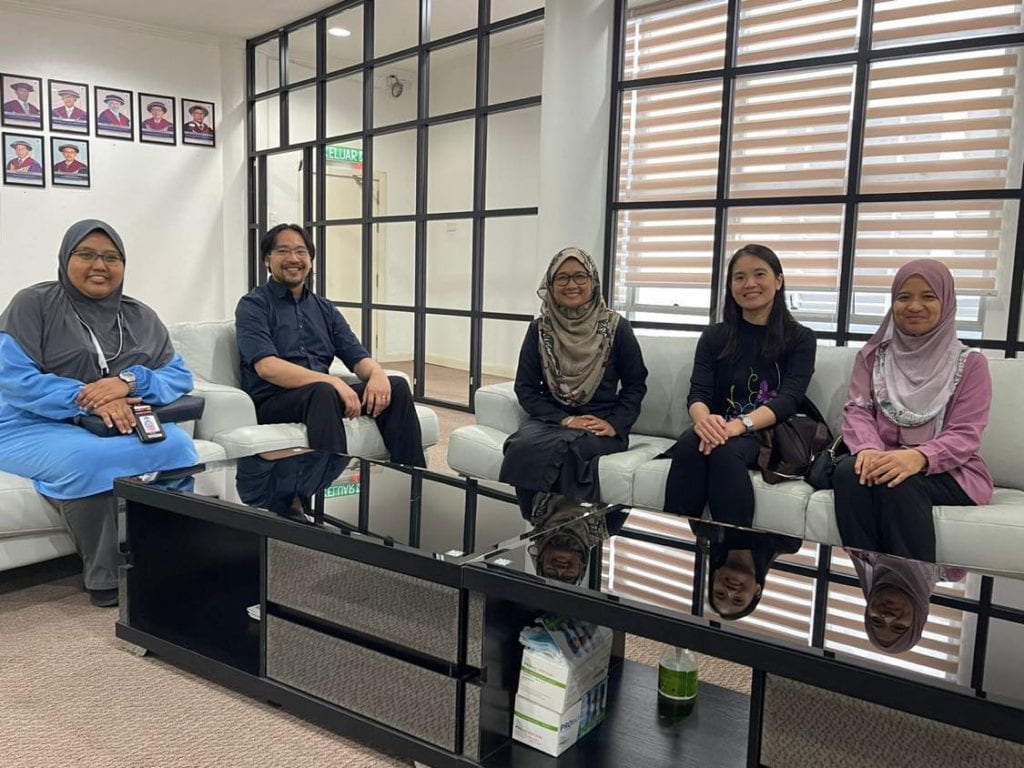Capacity-building for researchers
At the Commons Biodiversity Project, we are committed to providing high-quality capacity-building and experiential learning, where one is fully engaged in the subject of interest. Ain and Ruby’s visit to Cornell is an example of an experiential learning opportunity we created for Malaysian researchers to expand their horizons and connections. Cornell University and Ithaca have a wealth of knowledge and expertise that we hope to leverage. In addition to eDNA training, Ain and Ruby also had meaningful exchanges with citizen scientists, staff, and researchers of Fishtracker, Department of Natural Resources, Community Science Institute, and Horn Point Oyster Hatchery.





Student exchange programs
We hope to provide Cornell students with similar experiential learning opportunities at UMT, an institution that currently has ongoing student exchange programs with the United Kingdom, Thailand, and Indonesia. These programs allow students to access expertise and courses not readily available at their home institutions, gain field research experience, and get to know the friendly people and vibrant culture of Terengganu.

The Commons Biodiversity Project team visited three UMT research stations in September 2023 to further discuss details of a student exchange program as well as see for ourselves UMT’s offerings. Our first stop was Setiu Wetland, the largest wetland on the East Coast of Peninsular Malaysia, where freshwater, coastal, marine, and estuarine habitats can be found. The wetland is home to the endangered river terrapin (Batagur affinis) and the rare Papilionanthe hookeriana orchid. It was gazetted as a State Park in 2015. Setiu is also a major aquaculture producer, specializing in brackish water cage culture, pen culture, and oyster farming. We enjoyed fresh seafood in crispy flour flakes (celup tepung) at a local restaurant. Conveniently located in the mangroves, the Setiu Wetland research station is equipped with laboratories, dormitories, and a jetty for accessing the various riverine and marine habitats.

Spanning 260 square kilometers or 1.5 times as big as Washington DC, Kenyir Lake is the largest man-made lake in Southeast Asia. It was built between 1978 and 1985 to generate hydroelectricity and help with flood control. The Sultan Mahmud Electric Power Station is located at Kampung Jenagor, Kuala Berang. Surrounded by ancient rainforests, Kenyir Lake is home to the endangered Asian elephant (Elephas maximus) and Malaysian tiger (Panthera tigris). The scenic lake is a popular ecotourism destination. The Kenyir Lake research station is a large complex with comfortable housing for researchers and laboratories for processing field samples.

Bidong Island has a curious history. The 1975 reunification of Vietnam brought about an oppressive regime. Known as ‘boat people’, many families from rural areas crammed into small boats as they fled for their lives. Over 500,000 refugees seeking refuge in Southeast Asia were recorded, about 250,000 of them stayed at the Bidong Island refugee camp that was in operation between 1975 to 1991. Today, the island is a bustling marine research station. At the time of our visit, we saw at least 4 different research groups. Diving and snorkeling nearshore, the corals appear healthy with abundant fish life. We even saw turtle hatchlings, rescued from being breakfast for a monitor lizard (Varanus sp). Ain, Ruby, her graduate student as well as several research assistants revisited their sampling sites, this time to collect water samples for Giant clam eDNA (learn more at Giant clam eDNA).

Prospective exchange students will gain invaluable marine field research experience in an area of high biodiversity and hone newly learned skills with experienced scientists. The students may also choose to learn conversational Malay and observe skilled artisans making beautiful crafts such as batik patterned clothing and wau kite.